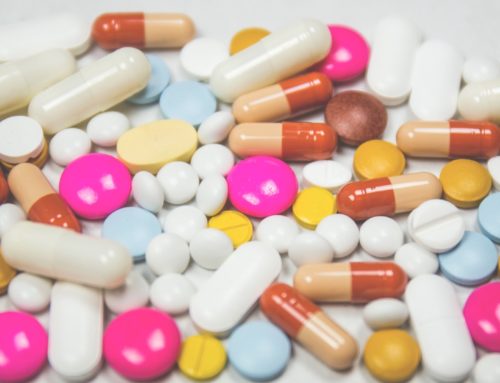As the single most popular — and healthiest — beverage after water, tea has long been established a staple fixture in the routines of many, with people from all different cultures and backgrounds averaging an incredible 2.16 billion cups per day.
Dating as far back as the 3rd century AD, tea drinking is often touted for its medicinal value and range of impressive side effects within the body — and with over 20,000 different teas to choose from, it’s hard to go wrong!
When it comes to choosing your tea based on the benefits it has to offer, however, there are a few key things to take into consideration. This article is here to break it down for you.
White And Green Teas
Technically speaking, only black, green, white, and oolong teas are actually derived from Camellia sinensis, aka the tea plant. Herbal ‘teas’, on the other hand, are derived from precisely any plant aside from the tea plant. Pretty interesting, if you asked me.
Of the purest teas, white and green are both more minimally processed, made using either the immature buds of the tea plant or the more mature leaves, respectively. The reason this information is important to note is that the more processed the tea leaves are, the lower levels of polyphenol flavonoids (i.e. the good stuff) they usually contain.
Flavonoids are a type of antioxidant, the most potent of which — known as ECGC — is found primarily in green tea, and has been extensively linked to the prevention of cancer, atherosclerosis, and type 2 diabetes (1).Antioxidants work within the body by binding to free radicals, which are the molecules responsible for mutations within the body that can lead to the development of disease. The average human will accumulate DNA damage as a result of these free-radicals in roughly 7% of their total cells — a process that antioxidants directly help to mitigate.
Furthermore, regular consumption of green tea has been linked to a risk reduction for an unbelievably long list of health issues, ranging from obesity and ovarian cancer to cognitive decline, stroke, LDL cholesterol oxidation, and many, many more (2, 3, 4). With the emergence of recent evidence to suggest that the ability of green tea in providing hydration to the body is on par with that of plain drinking water, it just might be the single most healthful substance you can incorporate into your daily routine (5).
With that being said, if you are someone who enjoys drinking your tea with lemon, white tea suddenly jumps ahead in the ranking with more to offer.Due to the lowering of pH that occurs as a result of the citric fruit, a significantly greater number of phytonutrients are able to be released when compared to green tea — both with and without the addition of lemon.
In fact, white tea (with lemon) was found to block 100% of DNA damage from the PhIP carcinogen in vitro studies, while green tea was only able to block a fraction of the same amount (6).
Oolong and Black Tea
Oolong tea is created by first allowing the tea leaves to partially oxidize and darken through air exposure, while the making of black tea involves a more complete oxidation process, providing drinkers with a slightly stronger flavour, as a result. Although more processed than their white and green counterparts, oolong and black teas still both have a great deal to offer as far as beverages can go.
Types of black tea include Darjeeling, Earl Grey, masala chai, English breakfast tea, as well as a majority of scented and instant teas. Black teas are rich in antioxidants, with research suggesting that consumption may aid in the prevention of lung damage as a result of oxidative stress caused by smoking (7).
Black teas also boast the highest caffeine content of the teas, which not only helps us to combat fatigue but is also responsible for the rampant production of alpha waves within the brain. This influx of alpha brain activity is what contributes to the ‘alert-but-relaxed’ state we may experience while drinking tea, even just minutes after taking that very first sip (8).
When it comes to supporting weight-loss goals and improving metabolism, however, research suggests oolong tea may fare best out of all. Despite containing only around half the caffeine as green tea, by comparison, the high concentration of polymerized polyphenols in oolong tea is thought to be what promotes its fat-burning and cholesterol-lowering effects, among others (9,10).
Herbal Teas
This category of teas encompasses anything from peppermint tea, to turmeric, to rose, with the assortment of health benefits varying almost equally in extent as the range of available flavours.
in 2009, a group of researchers set out to measure the flavonoid content (and thereby the antioxidant activity) of over 14 different herbal teas, including fennel, chamomile, dandelion, lemongrass, rooibos, bergamot, peppermint, thyme, hawthorn, lemon verbena, jasmine, rosemary, rose-hip, and lavender.
The top five to rank the highest following the experiment were chamomile, dandelion, lemongrass, rooibos, and rosehip (11). Important to note, is that steeping for any longer than 60 seconds did not seem to have a significant effect on the level of flavonoids available within the tea — making it solely a matter of personal taste preference.
Chamomile— Chamomile tea can not only be used in the treatment of anxiety and insomnia but also works extremely well as an anti-inflammatory agent — so well, in fact, that studies suggest it should be avoided by pregnant women in the same way drugs such as aspirin are (12).
Dandelion — Out of all these teas tested, dandelion tea was ranked highest in antioxidant activity within the body. Due to the presence of these bioactive components, this tea is most notably known for its anti-diabetic properties in the treatment of patients with type 2 diabetes (13).
Lemongrass — Fascinatingly, lemongrass tea has been observed within academia for its use in the prevention of anemia, as a result of its erythropoiesis boosting effects — i.e. an increase in the production of haemoglobin and red blood cells (14).
Rooibos — Also known as red tea, rooibus is thought to play a role in the prevention of cancer, making it a wonderful night-time/caffeine-free substitute for green tea (15).
Rose-hip — Involved in research on rheumatoid arthritis, rosehip tea has been shown to act as an anti-inflammatory, while also providing a range of benefits to the immune system and skin due to the high concentration of Vitamin C within the fruits of this plant (16)
To put it plain and simply, there’s a lot we still don’t know about the mechanisms behind the positive effects of drinking tea, but we do know that they’re there!
Because all teas possess impressive healing characteristics, they are a wonderful means for supporting ongoing health and preventing disease in our day-to-day. What this means is that the healthiest tea is likely just the one you’re willing to drink the most of — and if that’s not something to cheers a steaming cup of tea about, then I don’t know what is!
Alexandra Walker-Jones — January 2021
Text References:
- Wolfram, S. (2007). Effects of green tea and EGCG on cardiovascular and metabolic health. Journal of the American College of Nutrition, 26(4), 373S-388S.
- Basu, A., & Lucas, E. A. (2007). Mechanisms and effects of green tea on cardiovascular health. Nutrition reviews, 65(8), 361–375.
- Serafini, M., Del Rio, D., Yao, D. N. D., Bettuzzi, S., & Peluso, I. (2011). Health benefits of tea. In Herbal Medicine: Biomolecular and Clinical Aspects. 2nd edition. CRC Press/Taylor & Francis.
- Khan, N., & Mukhtar, H. (2013). Tea and health: studies in humans. Current pharmaceutical design, 19(34), 6141–6147.
- Ruxton CH, Hart VA. Black tea is not significantly different from water in the maintenance of normal hydration in human subjects: results from a randomised controlled trial. Br J Nutr. 2011 Aug; 106(4):588–95.
- Green RJ, Murphy AS, Schulz B, Watkins BA, Ferruzzi MG. Common tea formulations modulate in vitro digestive recovery of green tea catechins. Mol Nutr Food Res. 2007 Sep;51(9):1152–62.
- Banerjee, S., Maity, P., Mukherjee, S., Sil, A. K., Panda, K., Chattopadhyay, D., & Chatterjee, I. B. (2007). Black tea prevents cigarette smoke-induced apoptosis and lung damage. Journal of inflammation (London, England), 4, 3.
- Nobre, A. C., Rao, A., & Owen, G. N. (2008). L-theanine, a natural constituent in tea, and its effect on mental state. Asia Pacific journal of clinical nutrition, 17.
- Rumpler, W., Seale, J., Clevidence, B., Judd, J., Wiley, E., Yamamoto, S., … & Hosoda, K. (2001). Oolong tea increases metabolic rate and fat oxidation in men. The Journal of nutrition, 131(11), 2848–2852.
- Komatsu T, Nakamori M, Komatsu K, Hosoda K, Okamura M, Toyama K, Ishikura Y, Sakai T, Kunii D, Yamamoto S. Oolong tea increases energy metabolism in Japanese females. J Med Invest. 2003 Aug;50(3–4):170–5. PMID: 13678386.
- K. M. Yoo, I. K. Hwang, and B. Moon. Comparative flavonoids contents of selected herbs and associations of their radical scavenging activity with antiproliferative actions in V79–4 cells. J. Food Sci., 74(6):419, 2009.
- Srivastava JK, Shankar E, Gupta S. Chamomile: A herbal medicine of the past with bright future. Mol Med Report. 2010 Nov 1; 3(6):895–901.
- Wirngo, F. E., Lambert, M. N., & Jeppesen, P. B. (2016). The Physiological Effects of Dandelion (Taraxacum Officinale) in Type 2 Diabetes. The review of diabetic studies : RDS, 13(2–3), 113–131.
- Ekpenyong, C. E., Daniel, N. E., & Antai, A. B. (2015). Bioactive natural constituents from lemongrass tea and erythropoiesis boosting effects: potential use in prevention and treatment of anemia. Journal of medicinal food, 18(1), 118–127.
- Erickson, L. (2003). Rooibos tea: research into antioxidant and antimutagenic properties. HerbalGram, 59, 34–45.





